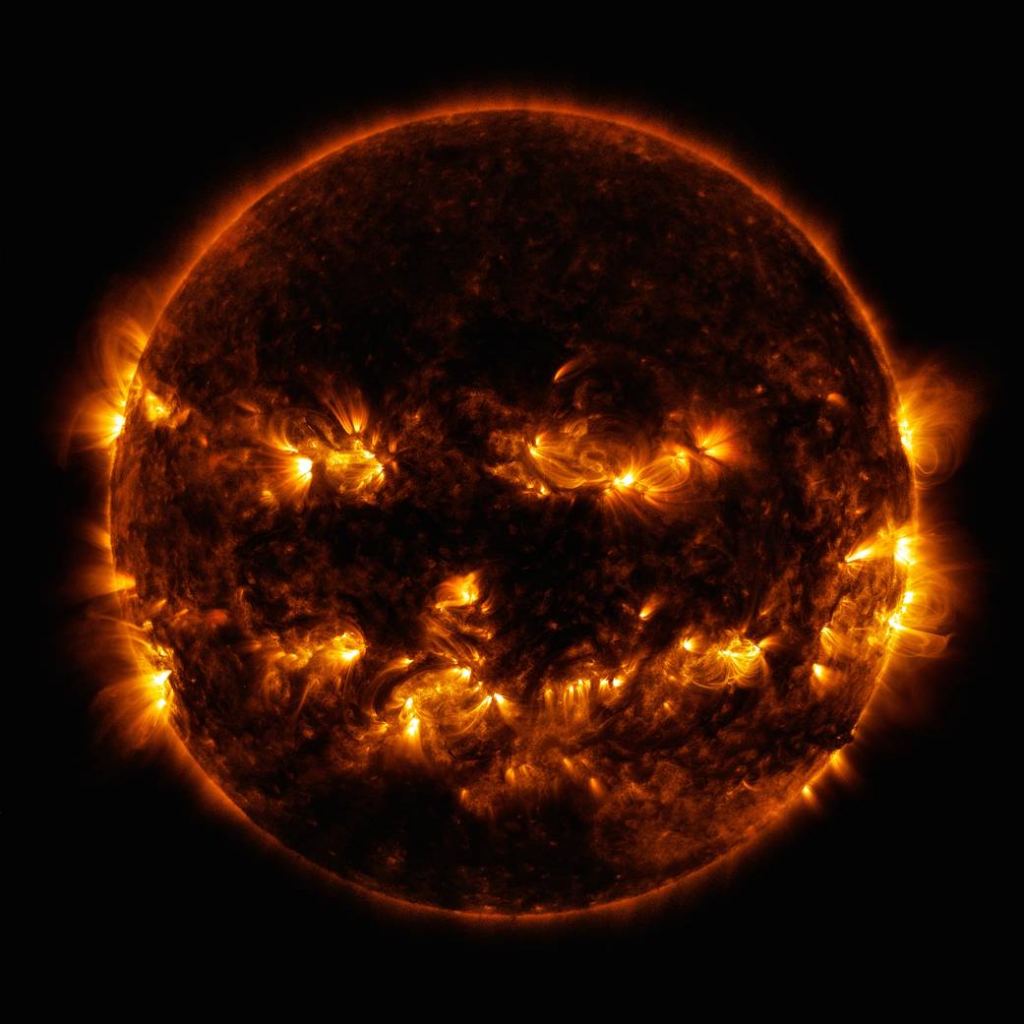Our Sun is the very reason we’re alive. It provides warmth and the energy our planet needs to keep going. Now you can add photogenic to its illustrious résumé, as NASA recently photographed our giant ball of nuclear fusion doing something quite peculiar.
“Say cheese!” NASA Sun & Space (@NASASun) tweeted on October 26th. “Today, NASA’s Solar Dynamics Observatory caught the Sun “smiling.” Seen in ultraviolet light, these dark patches on the Sun are known as coronal holes and are regions where fast solar wind gushes out into space.” These dark patches are also known as sunspots, which can reach approximately 3600 degrees Celsius (6500 degrees Fahrenheit), and are responsible for radiation-filled solar flares that can wreak havoc on a planet.
This phenomena is also known as space weather, and thankfully, our own planet has a protective magnetic field that deflects the solar flares to both the north and south poles, resulting in the beautiful auroras seen by many. Even with this field, solar storms can sometimes be powerful enough to create chaos with both satellites and worldwide electrical grids, causing communication delays and even blackouts.

It turns out this isn’t the first time our Sun has made faces at us, as NASA’s Solar Dynamics Observatory, or SDO, imaged the Sun depicting a jack-o-lantern’s face back in October 2014, which made for a spooky pre-Halloween treat for astronomy lovers.

In terms of size, our Sun is approximately 100 times wider than the Earth, meaning dozens of Earths could snugly fit inside the Sun’s recent “smile”, which is a humble reminder that while our Sun is responsible for both life and displaying familiar surface features from time to time, it can also be responsible for immense death and destruction, as well.
Maybe our Sun smiling at us is a sign that it wants us to stick around for a while, but if we capture it giving us a frown, then maybe it’s time to panic.
As always, keep doing science & keep looking up!

